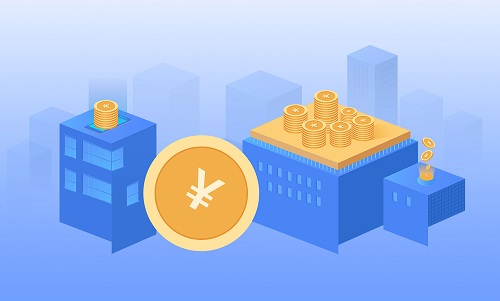SHI YUMENG/FOR CHINA DAILY
 【资料图】
【资料图】
Editor"s note:The Chinese economy has strong resilience, great potential and is full of vitality. With the optimization of the COVID-19 management measures, the country"s overall economic performance is expected to pick up in 2023, with the economic growth rate back to reasonable range. Three experts share their views on the issue with China Daily.
Nation reaffirms pro-growth stance
By Ding Shuang
The annual session of the National People"s Congress, which started on Sunday, has reaffirmed Chinese policymakers" pro-growth stance set at the Central Economic Work Conference in December. In light of China"s disappointing economic performance due to the strict COVID-19 restrictions, the CEWC had called for an "overall improvement" of the economy, starting with making efforts to improve expectations and boost confidence. In this context, we (at Standard Chartered Bank) had expected the government to set reasonable as well as ambitious economic targets to stabilize market expectations.
This year, the growth target is around 5 percent. Last year, China"s GDP grew by only 3 percent, undershooting the target of 5.5 percent by a big margin. That"s why local governments have adopted more ambitious growth targets for 2023, ranging from 4.0-9.5 percent and averaging 6 percent.
The inflation target is around 3 percent (annual average). Consumer price index inflation averaged 2.0 percent in 2022, and we forecast a moderate rise to 2.3 percent this year, much below the target even after assuming a significant increase in service prices on reopening.
The unemployment rate target is maintained at 5.5 percent. In addition, the government has pledged to create 12 million new jobs during the year. And if the recovery remains on track, these targets should be within reach, although lowering the youth unemployment rate (16.7 percent in December 2022) will be more challenging, in our view, given an increase in college graduates to about 11.5 million this year.
In 2022, the government had to under-implement spending to meet the broad budget deficit target of 7.4 percent of GDP, because of revenue shortfalls. The combined total revenue from the general public budget and government funds budget dropped 6.3 percent (relative to a budgeted increase of 8.2 percent) because of a 23 percent plunge in land sales revenue, tax refunds and a slower economy.
Spending increased by only 3.1 percent compared with the budgeted expansion of 15.6 percent, and the government appears to have deployed all available resources, according to our estimate, including general bond proceeds of 3.37 trillion yuan ($490.59 billion) and local special bond proceeds of 4.15 trillion yuan.
This year the official budget deficit (covering only general public budget) is widened to 3 percent of GDP from 2.8 percent last year, but the broad deficit (also covering government funds budget) is likely to be scaled back. In December, the CEWC called on the government to "maintain necessary spending intensity while making the fiscal position sustainable and local government debt controllable". The 2023 budget points to the government intention to provide adequate support to boost growth while maintaining fiscal sustainability.
Under the general public budget, the focus of fiscal support this year appears to have shifted to expanding spending, versus tax cuts in 2022. In addition, the central government may ramp up transfers to local governments to increase their spending capacity without adding to their debt burden.
Under the government funds budget, the local special bond issuance quota is set at 3.8 trillion yuan (slightly below 3 percent of GDP), higher than the original 2022 quota of 3.65 trillion yuan but lower than the augmented quota of 4.15 trillion yuan.
While the broad deficit is likely to be smaller than in 2022, we think fiscal policy will become more effective in supporting economic activity, and the expected revenue recovery would allow total spending to grow faster in 2023.
Besides, quasi-fiscal operations by policy banks may be increased, if necessary, to finance key projects.
The government is likely to tackle the problem of local hidden debt (including that of local government financing vehicles, LGFVs) by asset disposal and/or the issuance of refinancing bonds, with restructuring also likely.
The monetary policy tone is consistent with the CEWC"s message, aimed at "keeping money and credit growth in line with nominal GDP". We expect monetary policy to remain accommodative in the first half of this year, with reserve requirement ratio (RRR) cut likely in the second quarter of the year.
However, policy may turn neutral in the second half of this year when the recovery gains traction. The People"s Bank of China may guide total social financing growth to slightly below 10 percent to stabilize the total debt-to-GDP ratio.
The Government Work Report reiterated support for meeting the basic housing demand, and upgrading demand, as well as improving the balance-sheet position of high-quality large housing developers. Moreover, we expect the government to continue to prioritize job creation, including by normalizing the regulation of internet platforms, encouraging the expansion of private business, and attracting and retaining foreign direct investment.
广告
X 关闭
- 全球今头条!“地下蚁穴”暗伏多元体的生机与危机 “吉格尔与空山基:明日迫近”开幕
- 全球新动态:走近“燕京八绝”,领略“京作”宫廷艺术
- 【世界新视野】梁思成:修理古建筑,要像我的假牙,白中带点黄,取下就“无耻”
- 热头条丨民国京剧冬皇,与梅兰芳因爱成仇:再嫁人绝对不比你差
- 当前热议!梅之傲寒风骨、兰之君子风度,元代水墨花鸟画的逸品追求
- 焦点!知名画家韩敏去世,享年93岁
- 天天新动态:新华全媒+|让更多观众仰望星辰——独家专访《三体》动画制作团队
- 环球滚动:跨越7486公里的青年对话《想像荷兰》于三影堂艺术中心开幕
- 天天微速讯:董其昌之绝笔,堪称上乘之作!
- 环球即时:穹顶修复后,纽约圣约翰大教堂解决的百年难题
广告
X 关闭
- 天天新消息丨丰子恺:最有趣的生活,是活成“骨灰级孩子王”
- 天天热消息:走进潮州争奇斗艳的非遗文化,体味潮州丰富多彩的民间艺术
- 快报:张伯驹,画比命重要,半生所得文物尽数捐献给国家
- 环球速读:变脸、喷火、踢慧眼,川剧都有哪些绝活?
- 全球球精选!《红楼梦》 :梨香院十二个小戏子,贾蔷为什么会喜欢龄官?
- 当前快讯:将世界名画 放大10倍看,“变态”的细节令人发指!
- 环球快资讯:美,由内而外的美,名家仕女画欣赏
- 环球精选!回望2022|海外展览:从拉斐尔的抒情到卡塞尔的争议
- 环球时讯:第16届里昂当代艺术双年展《脆弱宣言》BHN携20位艺术家亮相
- 世界快资讯:自然与艺术相生 玉双美术馆落地秦岭 呈现首展——山水有清音
- 信息:试析中国艺术对法国洛可可风格的影响
- 环球新消息丨从“青楼女子”到一代“画魂”,她是画作藏入卢浮宫中国第一人
- 【天天播资讯】日本建筑大师、普利兹克奖得主矶崎新去世,享年91岁
- 全球简讯:米开朗基罗:不要钱打工的文艺复兴“卷王”
- 环球信息:现场|爱焰、奇遇与征服:黄浦江畔的古罗马“绝美之境”
- 世界今日报丨清宫玻璃画技艺的传输:欧洲—广州—宫廷
- 全球快资讯丨看了这么久的戏,你知道什么是“封箱戏、窝头戏、开台戏”吗?
- 焦点精选!疏密有致,形象生动:从北魏平城墓室中的壁画,看民族文化大融合
- 今日观点!不那么斜的比萨斜塔!在过去 20 年里逐渐直立
- 全球热点!丝织艺术巅峰之作《莲塘乳鸭图》是未完成之作?





























